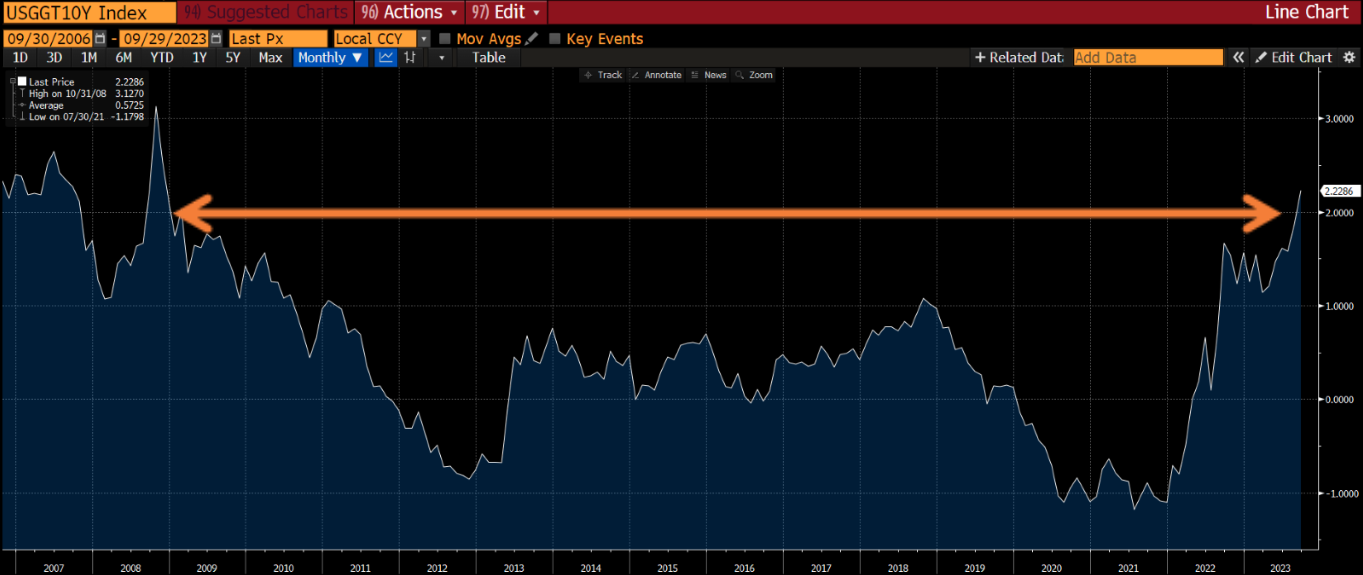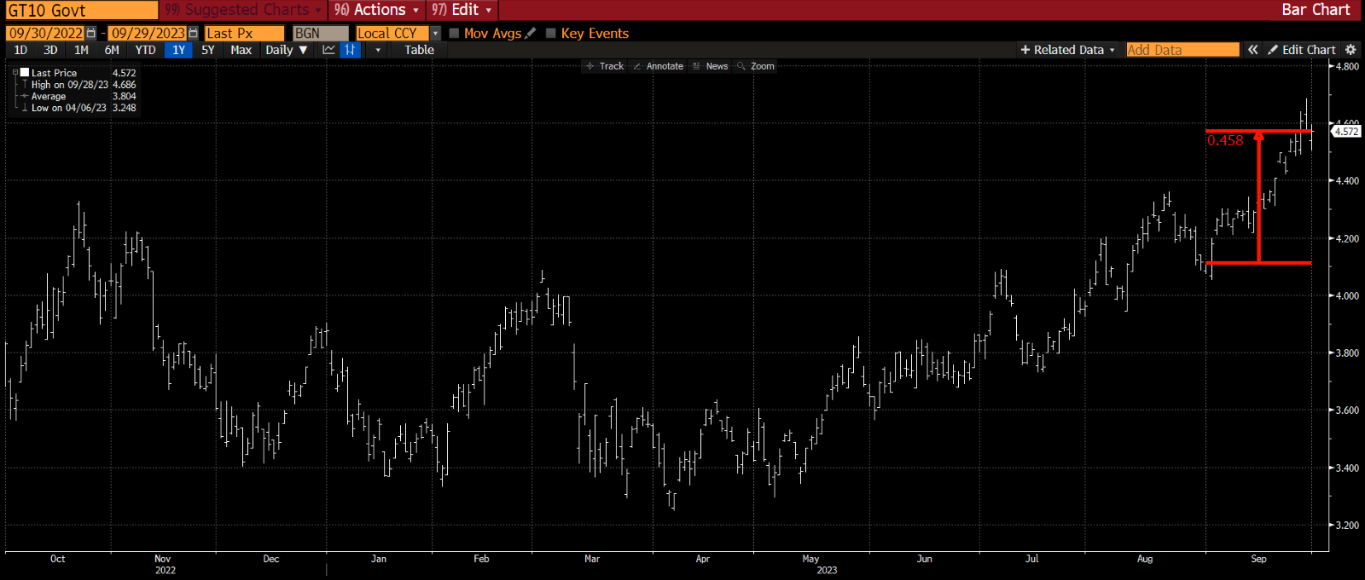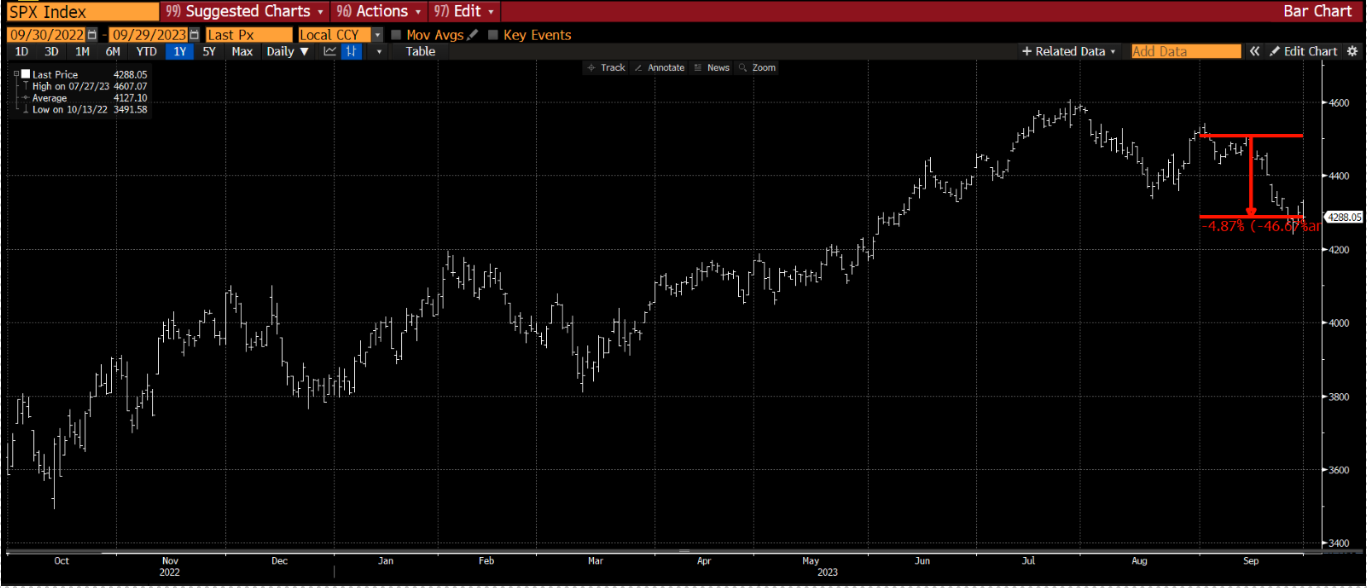Be Careful What You Wish For
After one- and one-half years of raising rates, the fed is finally getting the slowing economy it wants. But is it too much? Real rates spiked 36 basis points in September to 2.3%. We haven’t seen real rates at this level in 15 years.

While many focus on nominal rates, real rates are what matters. They are the real risk-free cost of capital, and as they rise, they put a crimp on returns for other asset classes. Recall that real rates were negative for part of 2020 and all of 2021. This meant that the real cost of money was negative! Think about that: The Federal Reserve wanted to stimulate the economy so much that it made the real cost of borrowing below zero. It was good for economic stimulation, but it has other consequences such as inflating the price of nearly every asset class.
But extremely low (or negative) real rates are an anomaly. It is only since the Fed began intervening during the Great Financial Crisis of 2008 that real rates have been held artificially low (is it logical that anyone would want a negative real return for lending money?). U.S. treasury investors now see a prolonged period of higher borrowing by the government. This is what is driving real rates—and in turn, nominal rates—higher. The 10 Year U.S. Treasury (nominal) yield rose a whopping 46 basis points during September!

Now the fed is starting to have impact. Higher rates will slow the economy. But the alacrity with which rates are moving may break something. This is the tricky part of the cycle, when the fed finally gets what it wants but perhaps at the expense of losing control of the narrative. It is still early, but sustained higher rates and may cause more impact to the economy than the fed desires.
Equities seem to get the message. As the most forward-looking securities equities are beginning to anticipate a slowdown. Thus far the decline has erased the AI and liquidity-induced froth that developed from May to July. Those factors and belief in a soft-landing induced traders to take on increased risk through July. Furthermore, momentum-driven traders such as CTAs amassed large options positions that drove up equity prices. These traders have no regard for price or fundamentals. As a result, the S&P 500 had an incredible run to the point it traded at an extremely rich 20x forward earnings multiple.
Alas, all good things must end. Once again, the bond party poopers brought the joy to an end with a cold dose of reality as higher yields drove equity valuations down and the S&P 500 fell 4.9% in September.

So, what is next? Much depends on the path of rates. Should rates pause or reverse the pressure on equities should subside. Absent something “breaking” such as a small cap bank, this may create an opportunity for a bounce in the short term. Outside of the “Magnificent 7” large caps there are pockets of cheaper names that are becoming interesting.
The real question is what level of damage the fed has already inflicted. The economy is slowing, particularly the low-income consumer. If this malaise spreads and growth slows further, it will pressure 2024 earnings which are the key to stocks maintaining current levels. It is still too early to know, and few companies will provide guidance to 2024 during their 3Q23 earnings calls. Our best guess is that earnings for 2024 need to come down, but it will take time. In the meantime, we will continue to pick through undervalued names and bide our time for the opportunity that is likely coming.
Please call with any thoughts or questions
Are you interested in making portfolio changes or getting a more in-depth analysis? Contact Stableford today by calling 480.493.2300 or simply request a copy of our Market Blast.
This market commentary was written and produced by Stableford Capital, LLC. Content in this material is for general information only and not intended to provide specific advice or recommendations for any individual. All performance referenced is historical and is no guarantee of future results. All indices are unmanaged and may not be invested in directly. The views stated in this letter are not necessarily the opinion of any other named entity and should not be construed directly or indirectly as an offer to buy or sell any securities mentioned herein. Due to volatility within the markets mentioned, opinions are subject to change without notice. Information is based on sources believed to be reliable; however, their accuracy or completeness cannot be guaranteed. Past performance does not guarantee future results.
S&P 500 INDEX: The Standard & Poor’s 500 Index is a capitalization-weighted index of 500 stocks designed to measure the performance of the broad domestic economy through changes in the aggregate market value of 500 stocks representing all major industries.
